An Allegory of Inclination
exploring the art and life of Artemesia Gentileschi, (1593-1656)
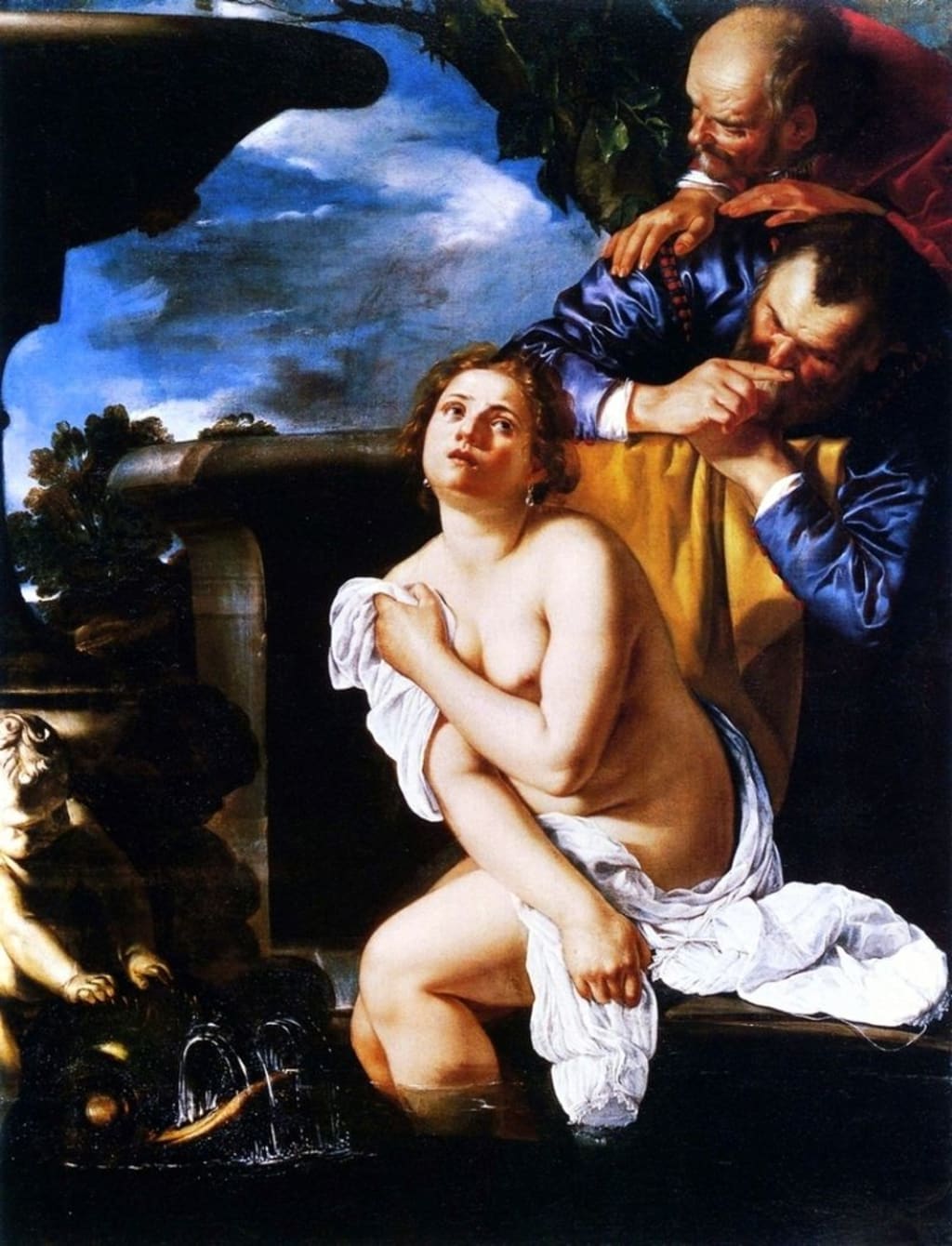
PROLOGUE: DISCLAIMER
ARTEMESIA:
In order to comprehend my colors,
I ask acceptance for
My Art, and understanding of who I was:
This tale represents blood, contains artistic nudity;
Awash in love and hate, it
Is steeped in illness,
And paints the death of child.
Beware. This is Artemesia's
Gallery. Do you dare see its beauty?
PART I: THE PRESENT
In the City of Florence
Life is good now, flourishing even; we meet the great Artemesia Lomi Gentileschi, here in the height of her painterly prowess. She is now a prolific court artist under Duke Cosimo II dei Medici, who considers her the most accomplished Italian painter of the generation.
She has just recently been accepted as honorary member of the Accademia delle Arti del Disegno of Florence, the first woman to hold this rank. It is an aesthete's dream to be in Florence, capable of following her every inclination.

After that dreadful debacle in her birthplace of Rome, it brings relief and shedding of past burdens to come to this city; here she can lose herself in the Florentine art scene, so much more sophisticated than that of Rome, and forget the trial and its fearful foremath. She could forget all the tragedies and traumas undergone (the pain in her knuckles), in the wondrous new life that has coalesced around her.
The torture her hands undergo each day, and square before the mirror today freezeframing her autoportraiture in glimpses then turning to work, is its own kind of cramped pleasure, like the sight of a cluttered workshop. Even in the mirror. It stiffens the joints in the hands and fingers, yet renders their bone supple too. Repetitive action.
Her father used his connections in Tuscany to get her married to a certain Pierantonio Stiattesi, small-time Florentine painter with deep connections to the Medici family, paired with a dogged devotion to her art and great skills of promotion.
Needless to say that her career, already formidable in Rome and having increased since this notoriety that her scandal brought, had become something of an international fame.
Presently she is working on a fresco for the newly constructed Casa Buonarotti, a grandiose architectural shrine to the genius of Michelangelo Buonarotti. The work is arduous, and although in an advanced state of pregnancy, she cannot resist being here with the other artists and assistants in the half-finished building, amidst the marble dust which sparkles indefinably in shafts of soft sunlight.
Each artist has been commissioned a Virtue associated with the man who painted the Sistine frescoes. Artemesia has been assigned the Allegory of Inclination. This Virtue is perseverance, a fixed pursuit of the artist's goal spurred-on to an ever upward glance. It means constant toil and sustained effort to create: that is Inclination. She has been spending a good deal of time contemplating the tempera frescoes of Botticelli, and here is her Allegory:

We must imagine her in the nude, as Artemesia intended, without the pall of drapery which a decorative artist will degrade her nakedness with in future times. Without, also, the yellowish film that has accumulated on the surface of the painting, muting and darkening its colors. Especially it's skygrounding blues. Her hair is burnished gold, a sun-toasted honeycomb blonde coinciding with Tuscan eventide on cloud-form recliner, a Botticelli reboot and fully self-conscious of its referenced reincarnation, meant to stroke the pride of Florentine viewers.
Her eyes are fixed on a glimmering eight-pointed star: at dusk? at dawn?
She holds in her hands a navigator's compass to guide her way, upward and forward, just like the great Michelangelo, whilst she settles down on that couch of cloud-shapes; she is Determination and Perseverance personified: eyes riveted on her own projection of action.
Artemesia Lomi is working side-by-side with painters such as Sigismondo Coccapani and Zanobi Rosi; what is more material, she is being paid thrice the wages they are for their commissions: approached for the project by the grand nephew of the great Michelangelo Buonarotti himself.
Not to mention the inestimable perks of life in matrimony with such a loving and understanding husband as her Pierantonio always was; how dearly he calls her his Maestra and Domina, and truly lets her have her way.

She is having a passionate (and strategic) love-affair with Francesco Maria Maringhi, a rich Florentine noble; right under her husband's nose. He doesn't even pretend not to be aware of it. In fact, the two men are famous friends, to the point that Francesco and Pierantonio carry on a parallel correspondence on the back of their love-letters, which flutter back and forth between them like so many love-doves of Venus for the happy trio.
Public will never catch on? or care?
Six years in Florence.
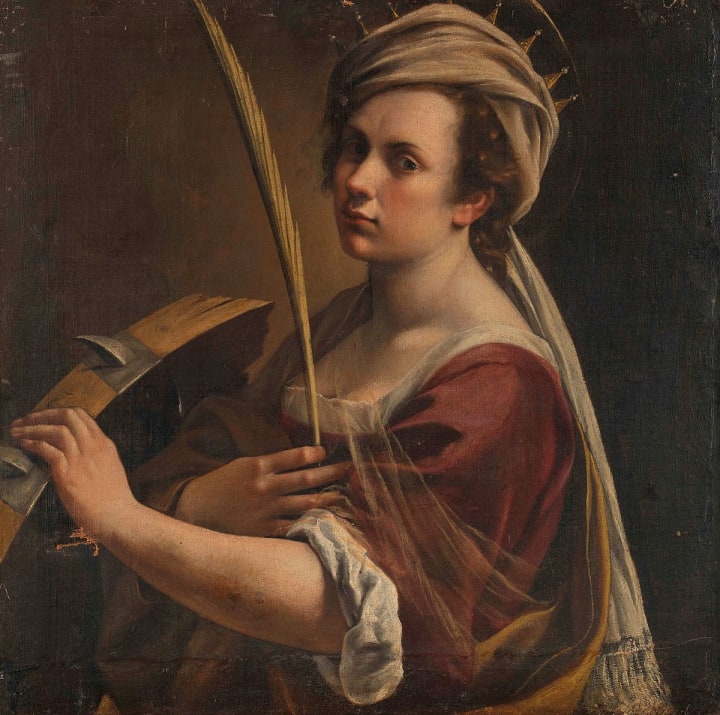
ARTEMESIA: You know, Tuzia, sciagurata! how the ancients say the nightingale and the swallow came to be?
TUZIA (Her maidservant, sighing): No, ma donna, but I'm sure it's another of your morbid and bloody tales you like to torture me with. Why do you tell me stories like that? Is it because I betrayed you? è perché ti ho tradito?
ARTEMESIA: Ascolta, Tuzia, just listen and we can forget all that. There were once two fair ladies, named Philomela and Procne, daughters of king Pandion. Procne was given in marriage to Tereus, king of a neighboring land; but in truth he lusted after the sister of his bride ever since he laid eyes on her. For five years he resisted his urges, but then Philomela begged to come visit her dear sweetest sister, in the company of king Tereus himself, to whom she'd entrust her safety, as to a father. He, villain that he was, took her to a small cabin in the wooded lands that lay between their kingdoms, and violated her there with raucous and savage enjoyment for almost the space of a day. Finished, he advised her to be quiet about it; but she defied him and would not be quieted: so he cut out her tongue with a hunting-knife and left her in the cabin. Philomela, muted, driven almost mad, wove a tapestry in her isolation depicting everything Tereus had done to her, sending it to her sister carried off by enchanted birds. Procne managed to track down her sister, with whom she then plotted a horrid sort of revenge. When the little boy Itys, the son she had born Tereus, came to see his mother for a goodnight hug, she and her sister slaughtered him then and there, and afterwards boiled his flesh, serving the meat to the father for a night-time meal after he'd been drinking.
TUZIA: Please, ma donna, this is all going too far! far too far.
ARTEMESIA: Just listen Tuzia, it's a classic Roman tale, Ovid tells it in his big poem on transformations. There are reasons these tales must be told and that the darkness must offset the light. But, you have never painted in chiaroscuro my dear wretched Tuzia, so never mind. In any case, the tyrant Tereus ate it all down, the stewed flesh of Itys that his mother and aunt prepared; only in the end when he was belching comically did they present him with the head of his dear little son, and tell him just what he had eaten. The king leapt up in a sobered fury, seizing a battle-ax, and pursued the women out of the precincts of the palace. They soon came to the banks of a river, frequent place of metamorphosis. The gods, in pity or punishment on these poor flitting sinners, transformed them straightaway into three sorts of featherlings. Philomela became the Nightingale, known for her plaintive calls.

Procne, on the other hand, was changed into a swallow, known for her aggressive agility and bold swiftness.

Finally, Tereus was transformed into a hoopoe: an odd bird with pretty extravagant plumage.

TUZIA: Signora, all this is very charming I'm sure for illiterate me. Sweet story with a sweet motto flying off in your mind with the sweet little birdies. My lady, you are perfectly gruesome. Why? Because you think you're traumatized. But did you know that with real nightingales, it's the male that makes those plaintive songs, the females don't sing at all.
ARTEMESIA: I did not know that, foul Tuzia, but that's all the more in keeping with the story. I guess Philomela will always be mute. Even in her state of transformation.
PART II: THE PAST
In the City of Rome
When she was mixing colors. Red. Yellow. Blue. White. Black. In the marvelous art studio of the Casa Gentileschi in her girlhood. Remember? it was in those days that Caravaggio borrowed the wings. Orazio Gentileschi, her father, was a man hailing from Tuscany and a great artist himself, too often overshadowed by his more famous daughter.
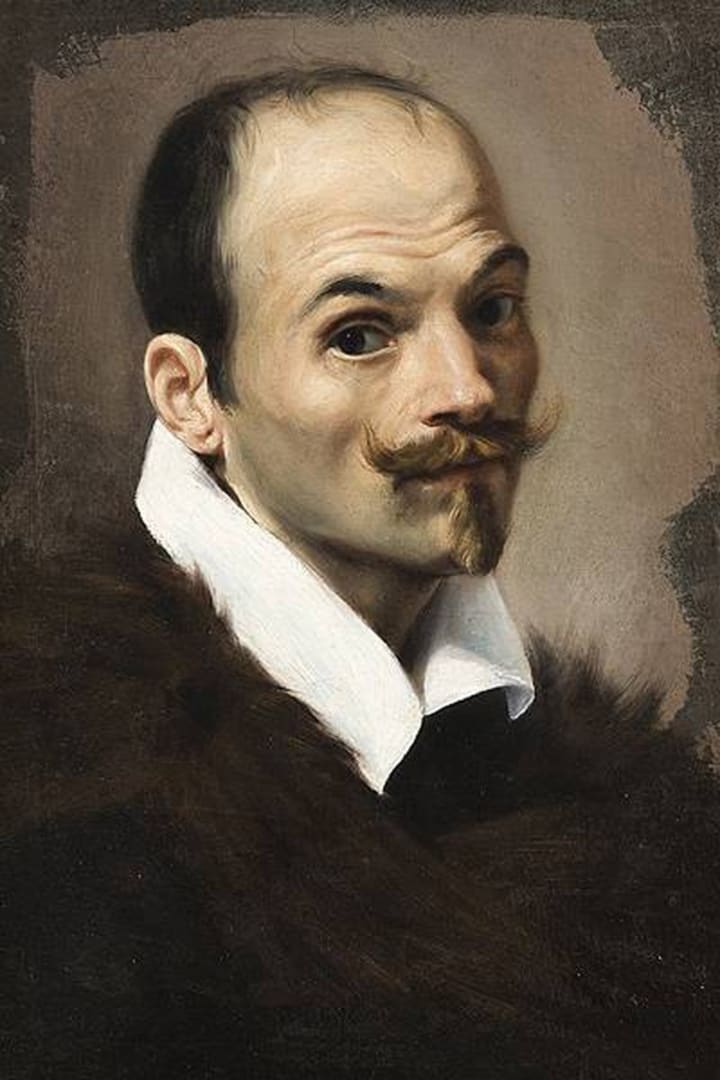
Orazio was an enthusiastic adherent to the new artistic philosophy of the great Maestro da Caravaggio, and he enriched the starkness of his chiaroscuro with a brighter more saturated palette. He was also very open to the innovations coming from the low-countries, and predicted that these Flemish painters would soon outshine Italy.

Artemesia took up mastering the art of painting from top to bottom from a tender age, after her mother Prudenzia died of the common cold.
Yet victory can follow upon tragedy; from the beginning she displayed more finesse and ability than her brothers. They were all raised in a paint-spattered jumble mainly by Orazio, who tried to juggle the tasks of father, mother, and teacher to his children. But already the success of the art studio was bringing in plenty of cash so he was able to give them all kinds of goodies and luxuries.
"Tell me bambini," he would ask them sometimes after coming home with all kinds of multi-hued powders from the vendecolori (color-sellers), how is the color red made?"
"Well," answered one of the boys, "cinnabar can be used...it's a soft rock...but usually we use..."
"Hematite!" piped little Artemesia. Red was her favorite color.
When she was eighteen years old, her father boasted that she had fully mastered the art of painting after only having practiced it for three years, and was now without parallel. In reality she had been practicing it since the age of eight.
A young lady now, she had the beginnings of that international and cosmopolitan clientele she would gain, and many a generous patron had already contributed to feeding the collective appetites of the Casa Gentileschi.
The first known painting of Artemesia Lomi comes from this period, treating a subject she will return to several times: the biblical story from the Book of Daniel concerning Susanna and that pair of voyeuristic Elders, leering at her while she bathed with their lustful inclinations. When the men accosted her, demanding sex, she refused emphatically, being of a very different inclination. Angered at her refusal, they accused her at court of law of committing lechery in the river with a certain young man, each time she would descend to bathe. The men of the Synagogue were about to stone her, but the prophet Daniel in his wisdom demanded the shifty pair of Elders be questioned equally deeply. They were caught during cross-examination disagreeing with each-other as to the species of tree present at the scene. Therefore the lecherous Elders, now known for their filthy deceptions, were put to death, instead of the virtuous Susanna. Some stories do have a happy ending.
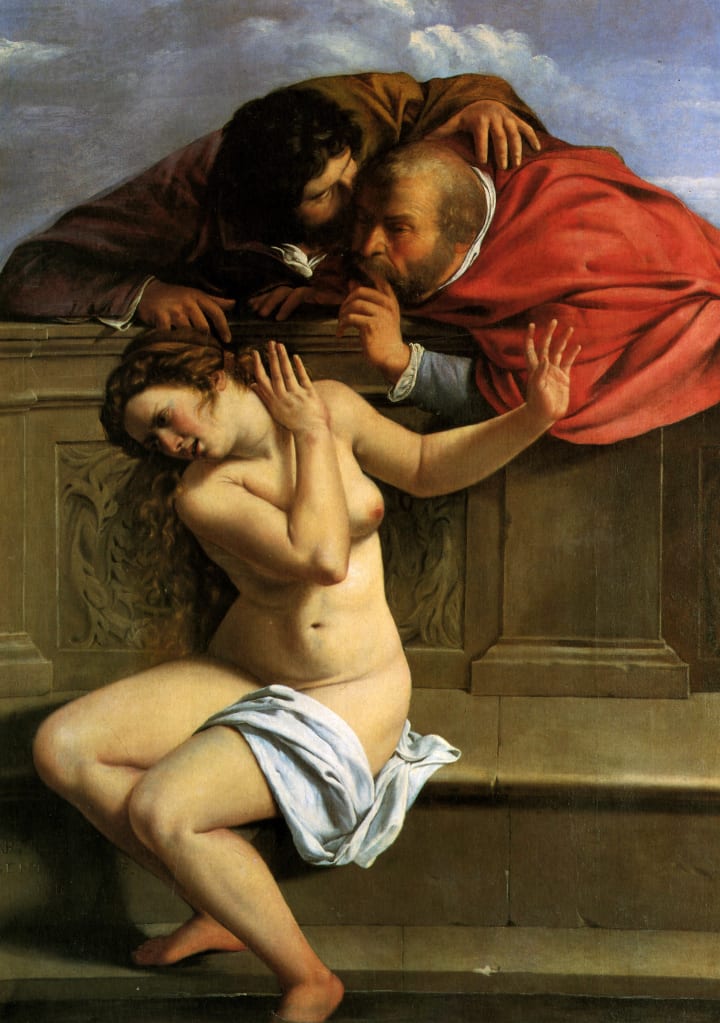
Stylistically, Artemesia Gentilescho assimilated the gritty realism and techniques of chiaroscuro from Caravaggio
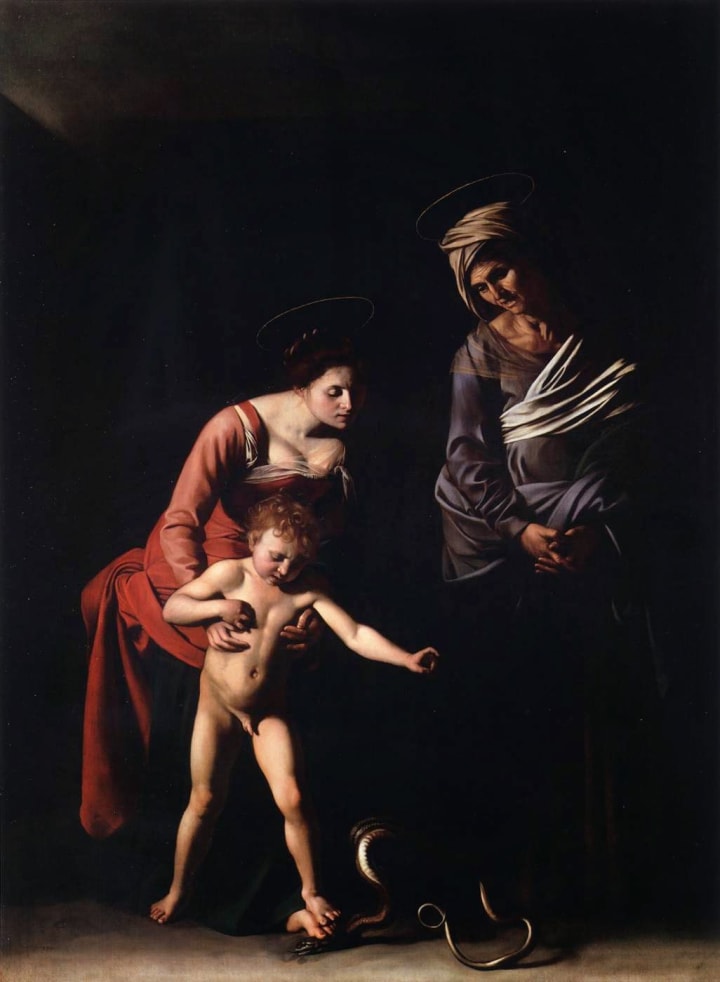
into the colorful charms and popping coloration of late Mannerism, exemplified by the Carracci brothers:

But she, the excellent and wise Artemesia Lomi, would take her manhandling of the myriad colorfolds to the next level of layered richness and drama, sometimes only barely shrouding the Naturalness of the female figure into a pseudo-manly metaphor for Fortitude.
So, that is why she would be considered the most progressive and expressive Italian painter of her generation.

However, she was soon to know hardship and adventure as price for her success. Enter Agostino Tassi, a cunning painter of landscapes and sea-scapes, quite good ones too, which you'll see if you take a look at this shadowy spray of foliage!

His figures, though, left much to be desired. He was an out-about-Rome kind of roamer, itching for profit and fame. They would paint together in her father's studio talking in voices all a-bubble with artistic excitement about a Project. The idea consisted of a large-scale figure painting (the Madonna and Child which she had not yet painted); she would do the woman in Venetian reds, the child in blues and ultramarine splendor, and a Saint in yellow: frame it, see? an off-center pyramid in primary gamut. Agostino would collaborate in a landscape and architectural scene to set the figures, maybe behind a balustrade or something, if he had the inclination. In darks and greenish blues to rival Leonardo in this kind of composition. They were thinking of referencing his Saint Anne with the Holy Family. Ambitious Project.
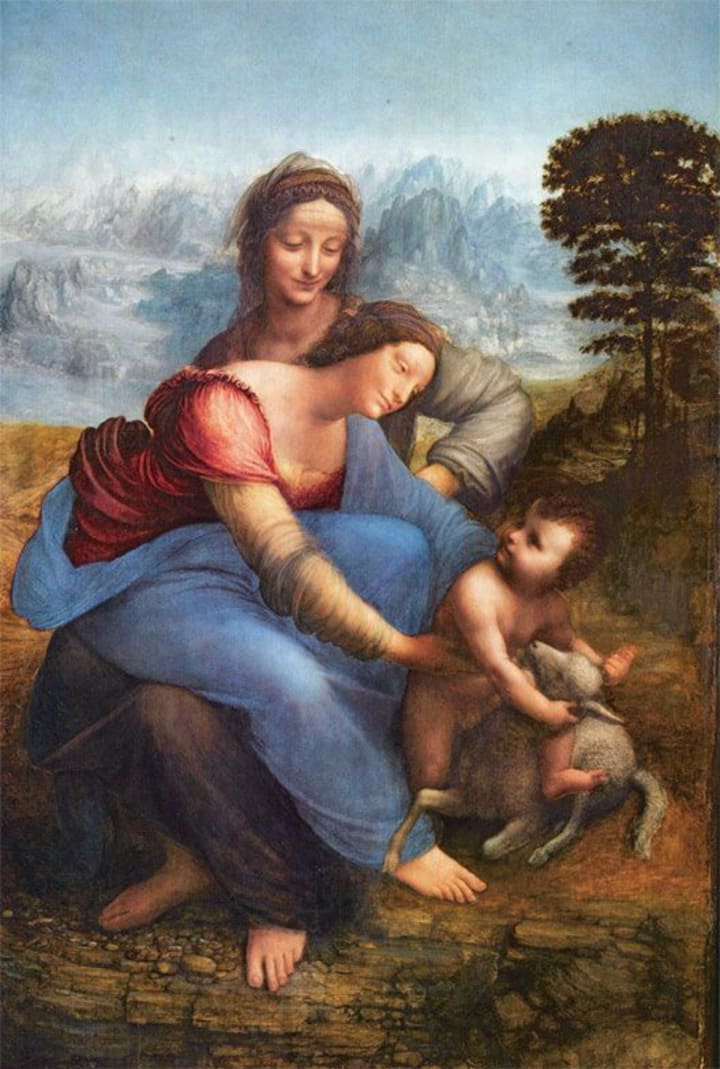
The hand was willing, but it was a shame she was too young or too busy to see that Agostino Tassi was a no-good sham huckster who'd never had an idea of his own in his head, if it wasn't how to swindle people, and worse. Her hand was more practiced than his, and her stroke was more manly. This made him envious, and envy is more a danger than jealousy.
They were both working on the vaults of Casino delle Muse inside the Palazzo Pallavicini-Rospigliosi in those days. He came to the Gentileschi residence one afternoon when she was alone with all but her maidservant and boarder, a woman called Tuzia. Cosimo Quorli accompanied him, and he stood guard at the chamber door while Agostino, making his thrusting inclination manifest, seized her by the wrists and shoved her against the table, taking her virginity by force. She cried out to Tuzia for help, but she had been paid-off by Cosimo and Agostino to stand guard at the outer doors of the house in case her father returned. Splinters in the thigh from that one. Such a prick.
Although she now vowed never to paint a Virgin and Child in her life, she continued to sleep with him after that point due to [com]promise of marriage. Who knows? maybe she did have feelings for him; but after nine months' time, he tried to get out of town with a bunch of her dad's paintings in tow both for resale and making mass-produced engraved knockoffs with his assistants. Always the resourceful trickster, that Tassi.

Orazio and Artemesia Gentileschi, pressed with bitter indignation, decided to openly press charges against the ravisher and thief.
"W'll defeat him! without a doubt," said Orazio to his daughter, "it is in the courage of the commune to prevail against tyranny! They will uphold our rights against that scoundrel and cheat, coraggio, figlia mia!"
As part of the process, the Gentileschi were both subjected to torture by thumbscrews (called so cutely "thumbkins/thumbikins") in order to verify their testimonies, which was an unforgettable feeling of pain and humiliation. The press of metal upon bone and flesh is enough to crush the matter of soul. They wondered, through their tears, if they'd ever hold a paintbrush straight again.
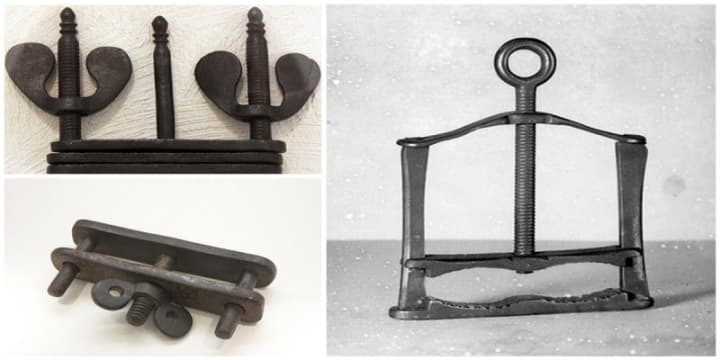
Admittedly, even though it was literal torture, it was well worth it, for they convicted Agostino of more than the theft of her honor and her father's masterpieces.
Turned out, too, that he had hired a gang of bandits to murder his own wife (apparently he was married), in order to obtain access to her modest fortune. Why? all to pay away his gambling debts and other legal fees he'd accrued.
Orazio and Artemesia, though victorious, clasped their injured knuckles and fingers in bloody swaths of cloth, full of painterly dread of damage done to the all-important machine of the fragile human hand.
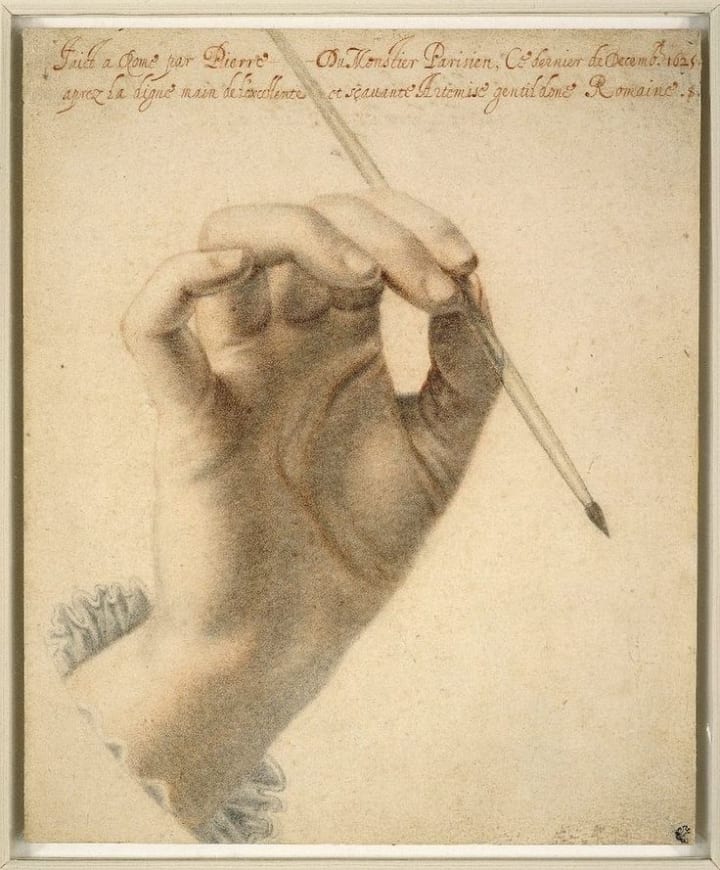
However, old wounds were quickly healed when life was busy and hurls always onward. The both of them got back to painting again rather quickly: put through the pillywinks one day, the next you're inclined to get back to work! No rest for the wicked.
See the Conclusion:
About the Creator
Rob Angeli
sunt lacrimae rerum et mentem mortalia tangunt
There are tears of things, and mortal objects touch the mind.
-Virgil Aeneid I.462
Reader insights
Outstanding
Excellent work. Looking forward to reading more!
Top insights
Eye opening
Niche topic & fresh perspectives
Excellent storytelling
Original narrative & well developed characters
Compelling and original writing
Creative use of language & vocab
On-point and relevant
Writing reflected the title & theme
Expert insights and opinions
Arguments were carefully researched and presented
Easy to read and follow
Well-structured & engaging content
Heartfelt and relatable
The story invoked strong personal emotions


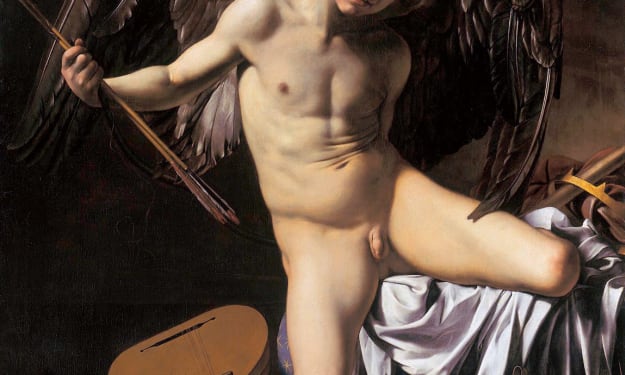



Comments (6)
This comment has been deleted
Ahhh, yes, a beginning *face palm*. Now this certainly ties things together nicely. I apologize for reading out of order! This first half is just as stunning. She was a phenomenal artist and I enjoyed learning about her through your use of historical fact, narrative, and poetry. Bravo
*These are my comments as I read.* I DO dare. I’m already a huge fan of Artemesia. Damn. Impressive. I get why people mistook her art for Carvaggio, yet, as my memory serves, I think she is better! (Also, "formath." Love it. Coining new words with poetic grace, Rob; I salute you.) Ugh I feel her pain. You craft it so delicately, yet with much intensity. I envy your writing skill, sir. (After finishing, I see now the significance of this. Wow, your grasp on the timeline here is masterful. Wonderful way to tie in the beginning and the ending.) Double "of" in the paragraph preceding the Allegory of Inclination. Wait, what? Are you really saying that artists would paint over nude portraits with flowing drapery? I had no clue about this. I hate that! "Eventide" is one of my favorite words. This woman is a treasure. I cannot help but feel such admiration for her. You paint her so well. And side note, I truly love how you craft these art stories. To learn about each piece she creates in a narrative form is my new favorite way to learn about classical paintings. Well done for the effort you put into these! Dayum, the love trio is successful?? Small typo "For five years he resisted his urges, butthen…" I know I read that story recently, but I feel more sickened and shocked by its ending here. Holy sh*t. Lol, "foul, Tuzia." I love how you incorporated that myth. I feel it will come back around later, and I sense it will be good. What of her trauma? It must relate deeply. (Now my thoughts are on Tassi, and that trauma that Tuzia mocks. [Foul Tuzia!] I feel dread now for her unborn child.) I wonder how old Artemesia was when she painted "Susanna…" It’s stunning. Tassi’s "Landscape…" WOW. I love the detail. It must be HUGE. I keep noticing the word "inclination." Intentional reference to the painting, perhaps? I sense a theme developing… Holy fu**ing sh*t. Wtf?? Thumbikins to verify their testimonies? What? Did Tassi get the same treatment?? Oh wow, I love that Monstier sketch. I want it on my wall. This was SO GRIPPING, Rob! Well done, seriously. I can’t wait for the next one!!
Haunting Chiaroscuro! It is daring to ask understanding of one's colors, then raise the curtain. I loved this work, your light and dark in word and visual art, the tonal harmonics that were like echoes for me, first heard in the arias and art songs I sang when young. Mi scusi signore. Ci siamo già incontrati in una vita precedente? Bravo!
I love the combination of prose story telling, historical document, and script narrative! You flow seamlessly between them and each transition highlights the piece before and reorders your reader's mind to better appreciate what comes next. The amount of research that went into this piece and it's sequel is truly incredible! I think there's more study involved in these two stories than any essay I ever wrote for school. As I was reading, I was confused at first, as to why Tuzia was being berated by Artemesia but then the reveal! Your work is always stellar! Truly outstanding!
R, this was such a great journey and read you took us on! A long read but the commitment is so worth it! I love the way you set the scene so seamlessly and brought us into this world you imagined! As a reader the 19 minutes read time was intimidating but as I writer I completely get it, the work goes where it wants to and we are just the messenger sometimes! As I’ve said, early it was worth the 19 minutes! You did a great job portraying Artemesia Lomi Gentileschi in such a beautifully tragic way, but also heroic in her struggle with her ailments as she perseveres for the sake of her art! I appreciated you shedding light not only on her arthritis but also the toll pregnancy had on her and how she pushed through it anyways. I think it’s so important to highlight woman doing everyday things and show that even the greatest of us have struggles too! Very smart work there! I can tell you did a lot of research for this one and you did a beautiful job adding important bits of history to the story line! I love your descriptive language when you talked about the intended nude painting. It was so vivid I dare say, you didn’t need the painting to go along with it as I could see it in my mind with just your words! In fact I perfected your explanation to what my mind/ eyes picked up in the painting as I didn’t see as much as you were able to point out! Great job showing off your skill set there! I like the way you transitioned the story to a dialogue driven format, made the story feel more engaging and less like a historical piece. Nice idea, there! This is defiantly where things got dark though and I appreciate the warning a head of time! It may be a good idea to put a disclaimer at the top of the story, just stating the exact trigger warning because I do know a few readers/ writers that have this specific trigger. You don’t need to be specific, you can just say something like sexual content and child death. Like I said, I am good with it but I know a few that may not be. I do like the lesson that’s tory taught us thought, that was a great touch! When I got to part two, I couldn’t help wondering if maybe it would be a good idea to split this post into two stories…? My reasoning would be that you’d get more reads/ readers because the stories are shorter and also because they’d have to read two parts. Just a thought though! I like how in part two you flipped to her upbringing, very clever to show us a flashback of how she grew into her talents! I was rattled about the part when they submitted themselves to torture just to testify against the man that wronged them! Crazy times! I find it interesting how her work turned violent so quickly, but I suppose that’s what happens when a person faces such traumas as she has! In part three I love that she found another level of success, in working along side/ amongst some truly great painters. They’re version of rubbing elbows with the famous. I love that you ended this was a poem, it ties everything together and explains her thinking so well! Nicely done!
You have unlocked a grimoire of art history and are revealing secrets within. It is as if ancient spirits are working through you to have their stories be considered. So glad you have the inclination. ..the quality and rate of your productivity is incredible.